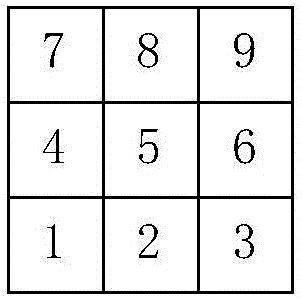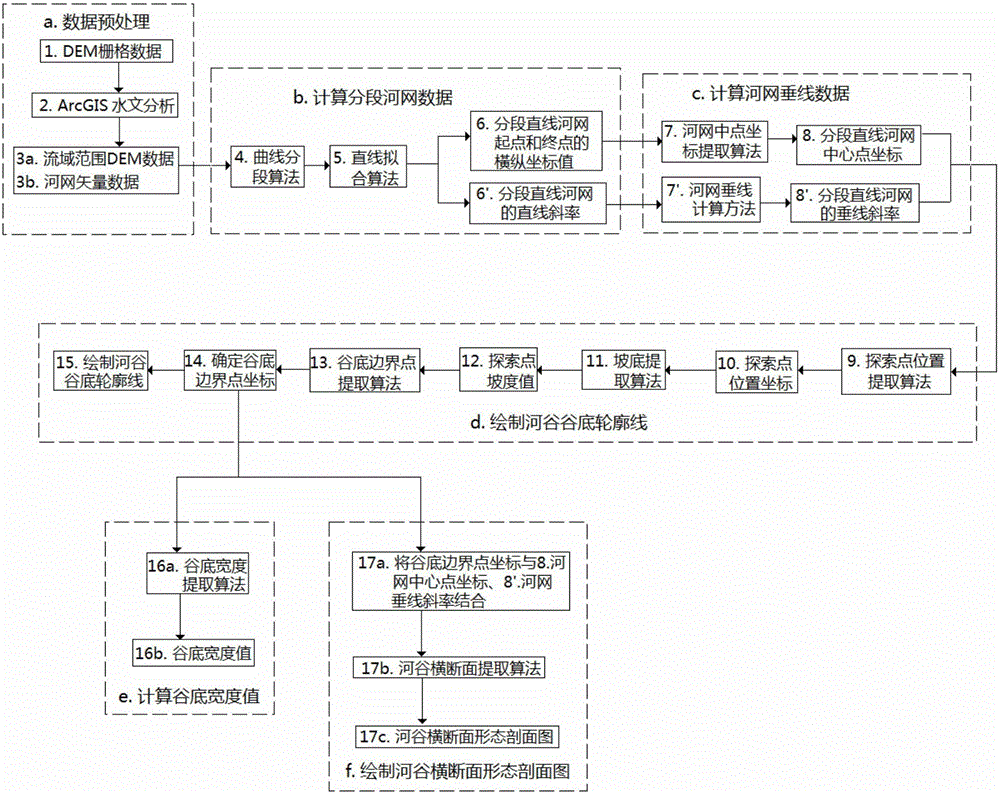DEM-based river valley cross-section morphology algorithm
A cross-sectional and algorithmic technology, applied in the fields of cartography and geographic information systems, which can solve problems such as rare, complex morphological features, and small research areas.
- Summary
- Abstract
- Description
- Claims
- Application Information
AI Technical Summary
Problems solved by technology
Method used
Image
Examples
Embodiment 1
[0148] Such as figure 1 As shown, a DEM-based algorithm for the cross-sectional shape of the valley includes the following steps:
[0149] (a) DEM-based data preprocessing: Based on DEM raster data, the hydrological analysis and processing function of ArcGIS software is used to complete the generation of non-depression DEM data, the analysis of water flow direction, the calculation of the accumulation of water flow, and the extraction of river networks. Network and watershed segmentation to obtain watershed-wide DEM data and river network vector data;
[0150] (b) Calculation of segmented river network data: using the river network vector data obtained from the data preprocessing step (a) and the DEM data of the watershed range, the river network is first divided into N segments by the curve segmentation algorithm, and then the straight line fitting algorithm is used to divide the river network into N segments. The segmented curve river network is fitted into a straight segme...
Embodiment 2
[0261] The middle section of the Russian River Valley selected in this embodiment is a U-shaped valley. Based on the DEM data of the middle section of the Russian River Valley, the optimal threshold is set as the fitting angle threshold ∠Al170°, the exploration distance threshold D is 4 meters, and the comparison slope threshold SlpThd is 25°, through the same steps as in Example 1, the valley bottom contour line of the middle reaches of the Russian River Valley was drawn, the valley bottom width value was calculated and the valley cross-section profile was drawn.
[0262] The contour line of the valley bottom in the middle section of the Russian River Valley is as follows: Figure 7 shown.
[0263] When calculating the valley bottom width value, the valley bottom width value of multiple locations is calculated at the same time and the correlation analysis is performed with the measured valley bottom width value to obtain the correlation coefficient R between the calculated va...
PUM
 Login to View More
Login to View More Abstract
Description
Claims
Application Information
 Login to View More
Login to View More - R&D
- Intellectual Property
- Life Sciences
- Materials
- Tech Scout
- Unparalleled Data Quality
- Higher Quality Content
- 60% Fewer Hallucinations
Browse by: Latest US Patents, China's latest patents, Technical Efficacy Thesaurus, Application Domain, Technology Topic, Popular Technical Reports.
© 2025 PatSnap. All rights reserved.Legal|Privacy policy|Modern Slavery Act Transparency Statement|Sitemap|About US| Contact US: help@patsnap.com



